



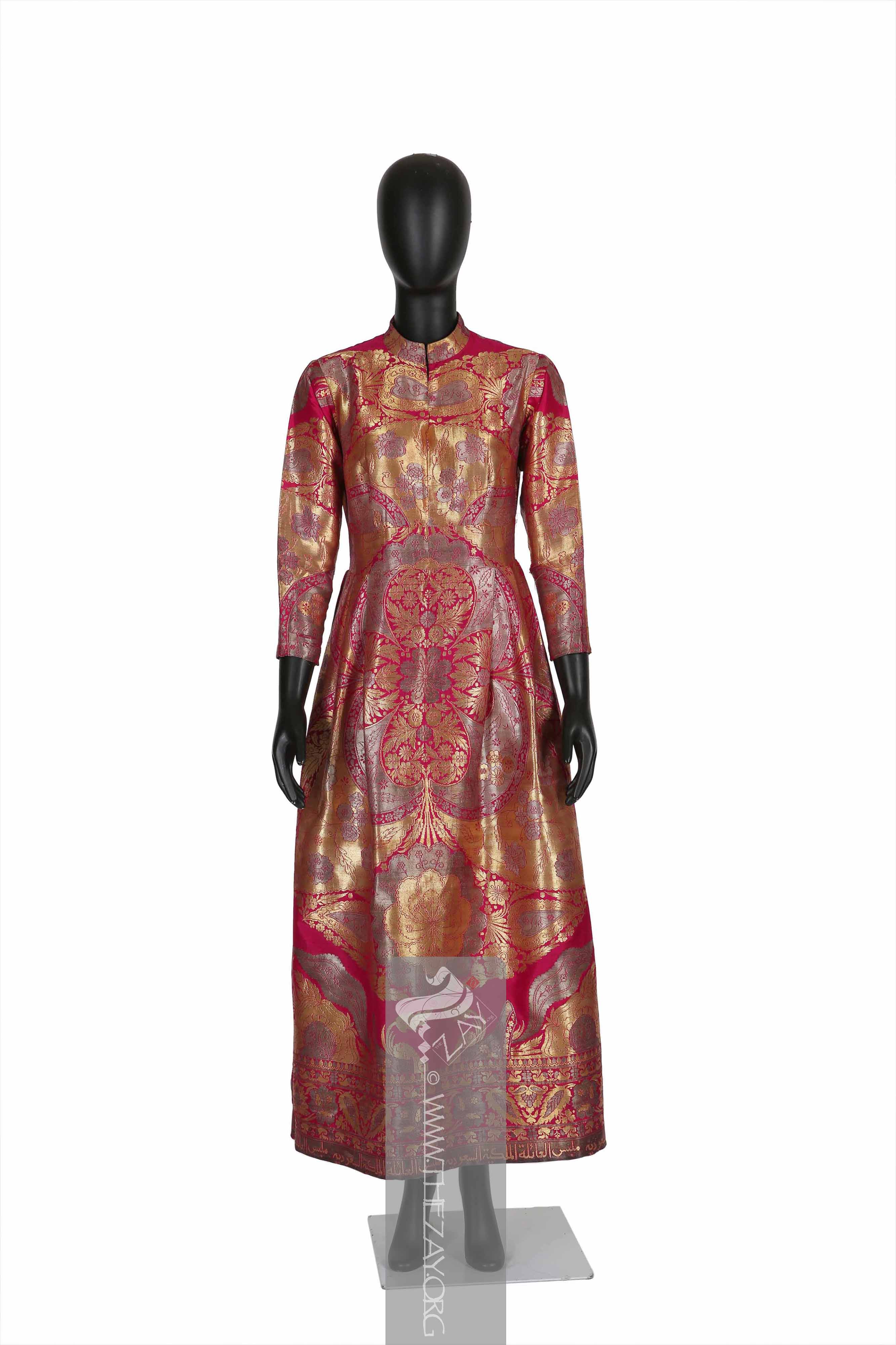

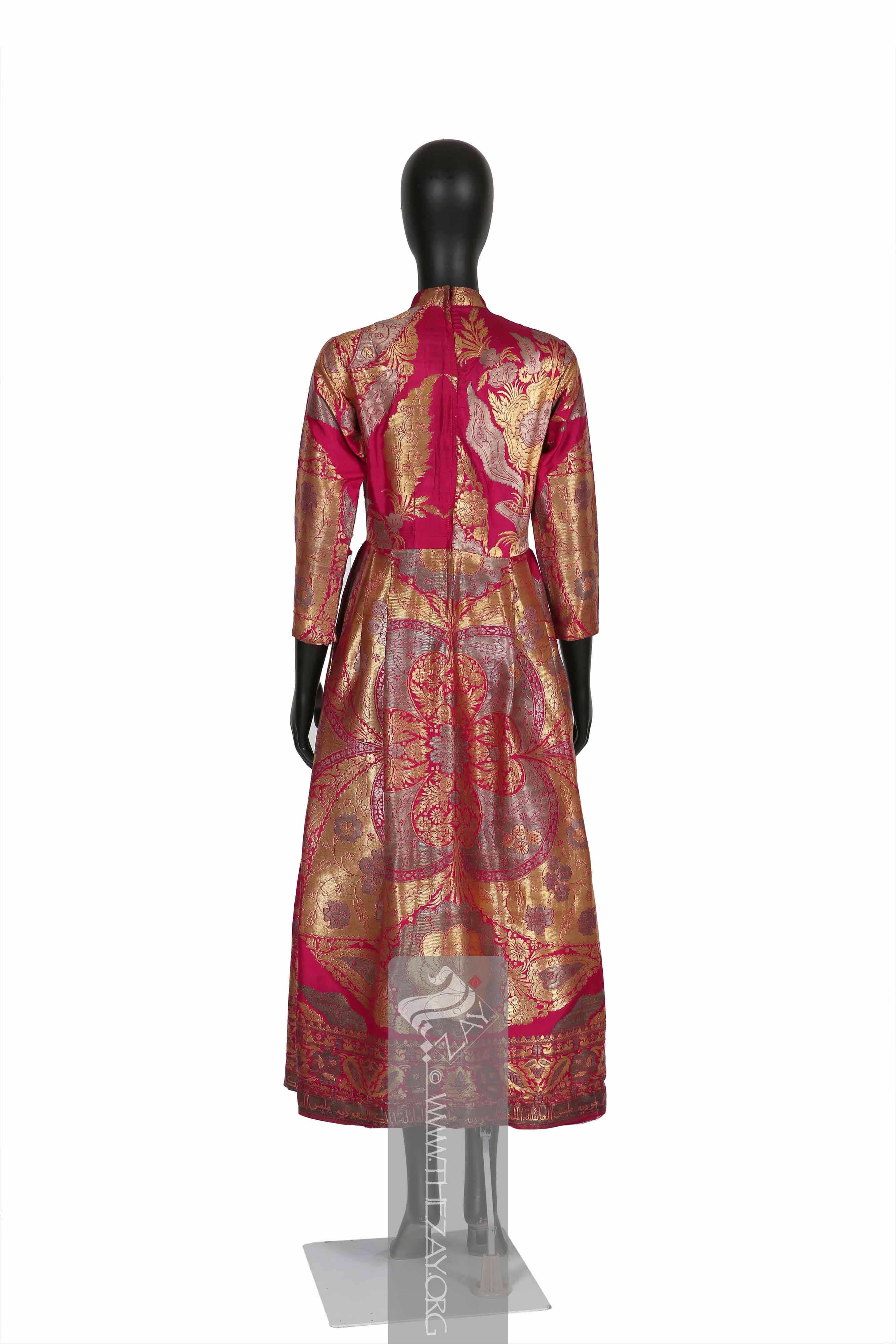
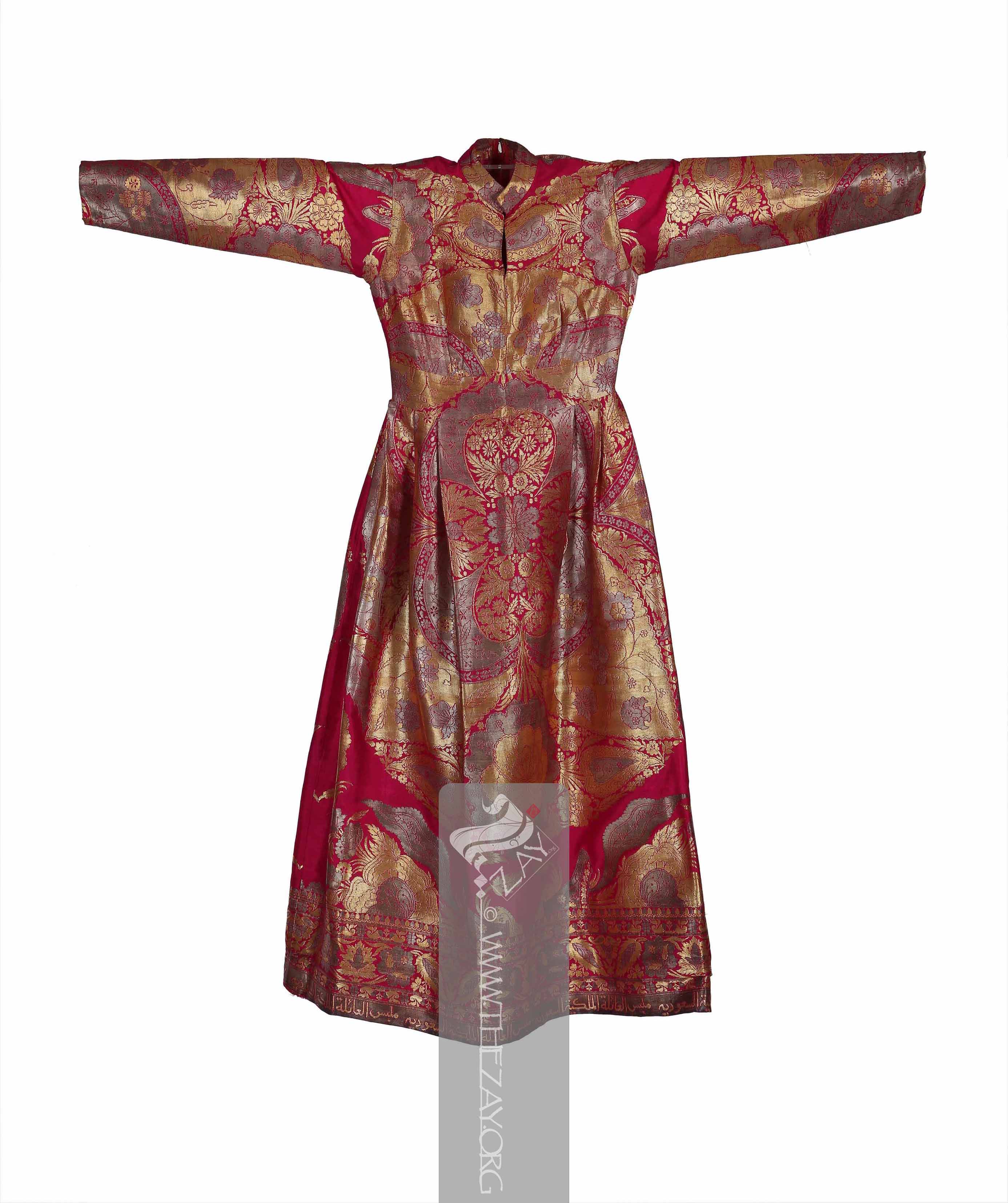
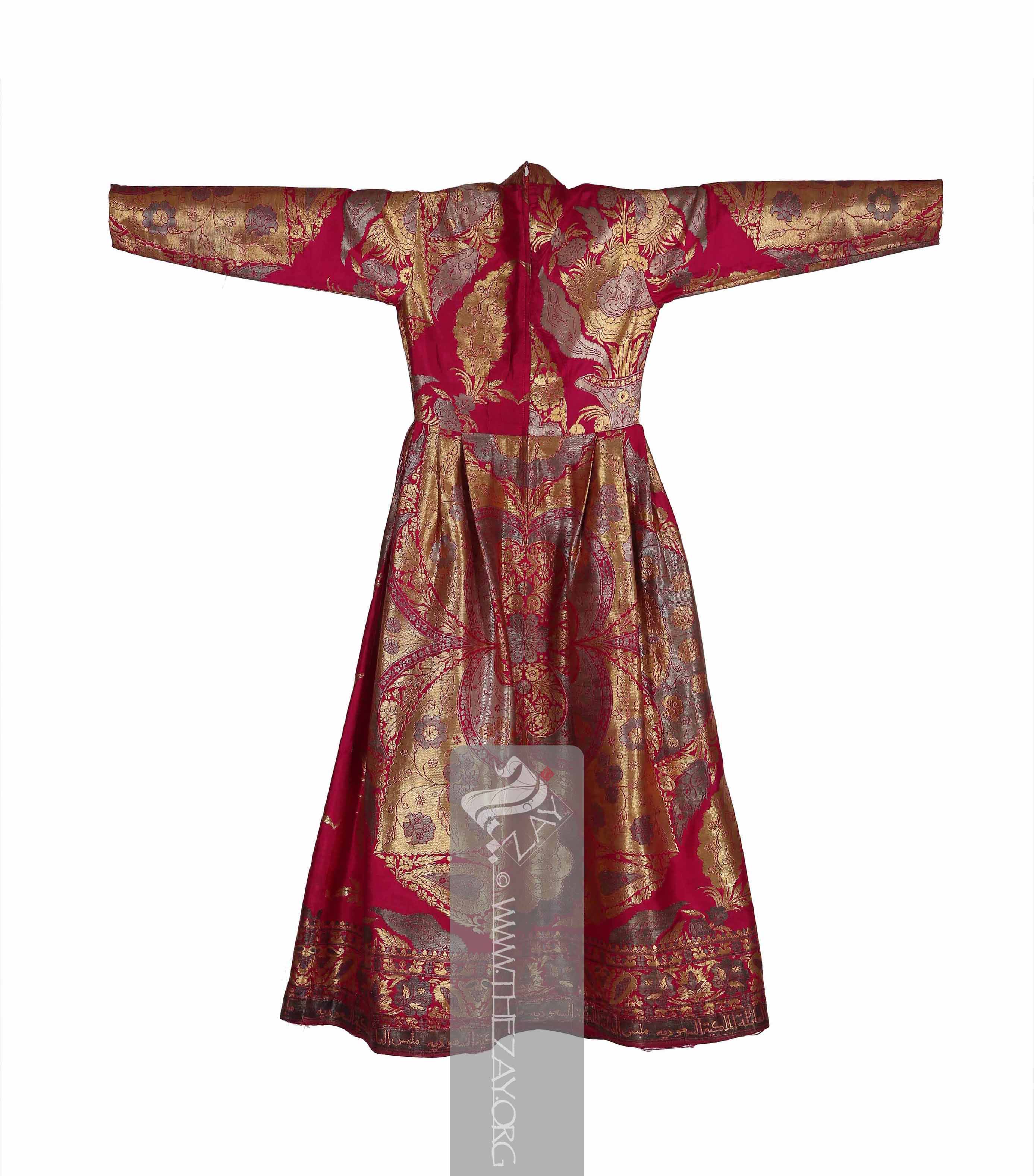
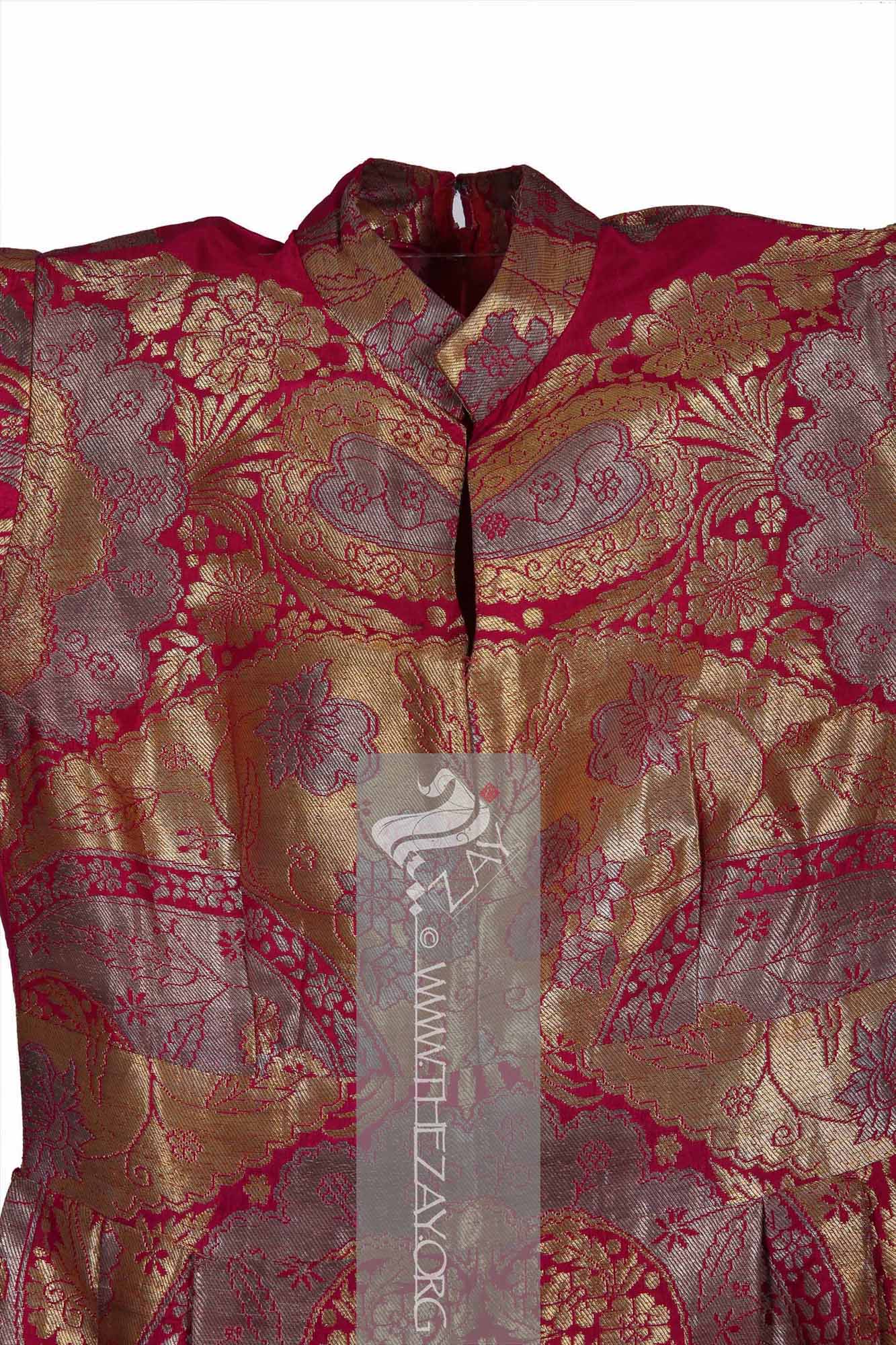
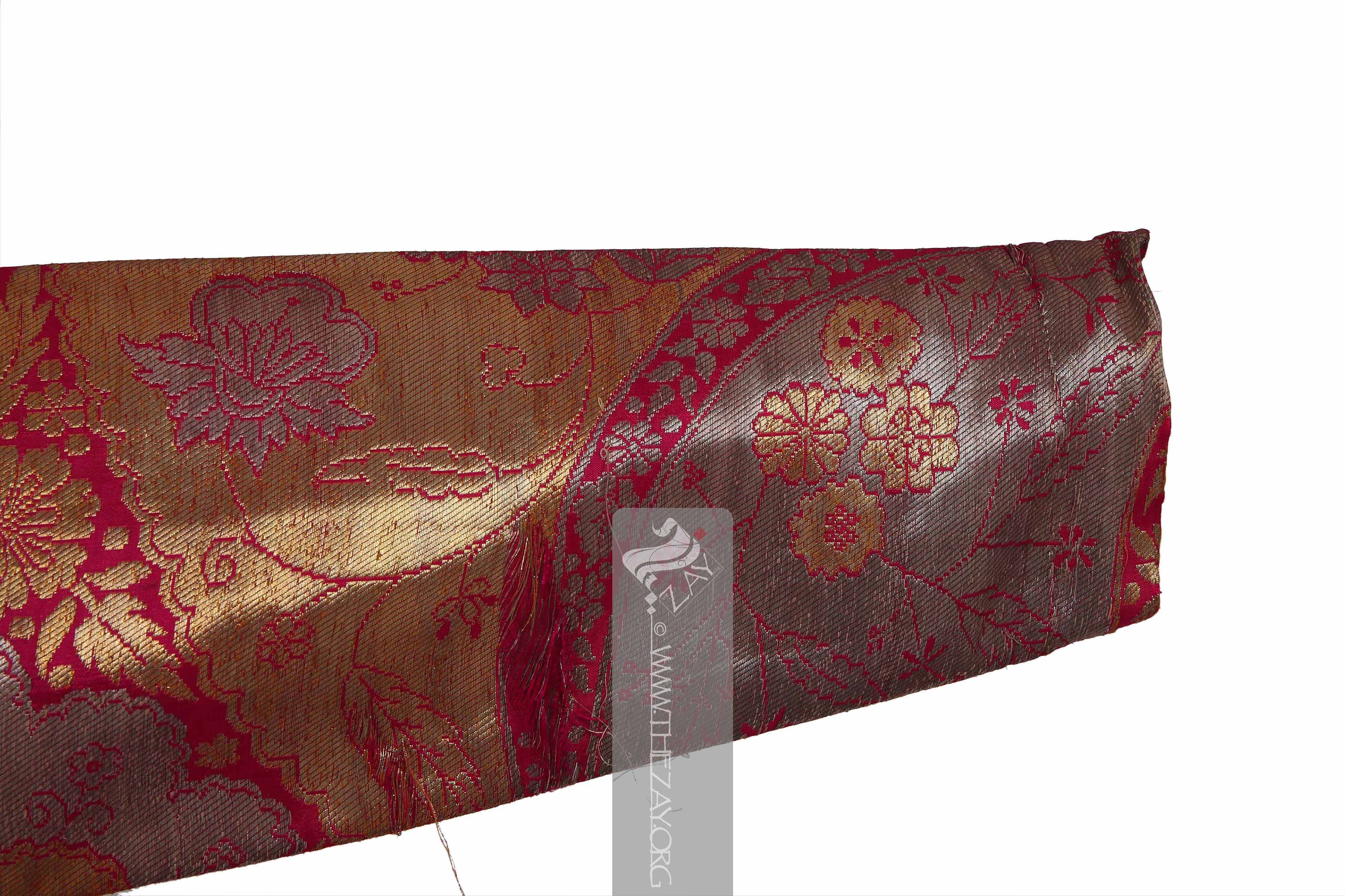
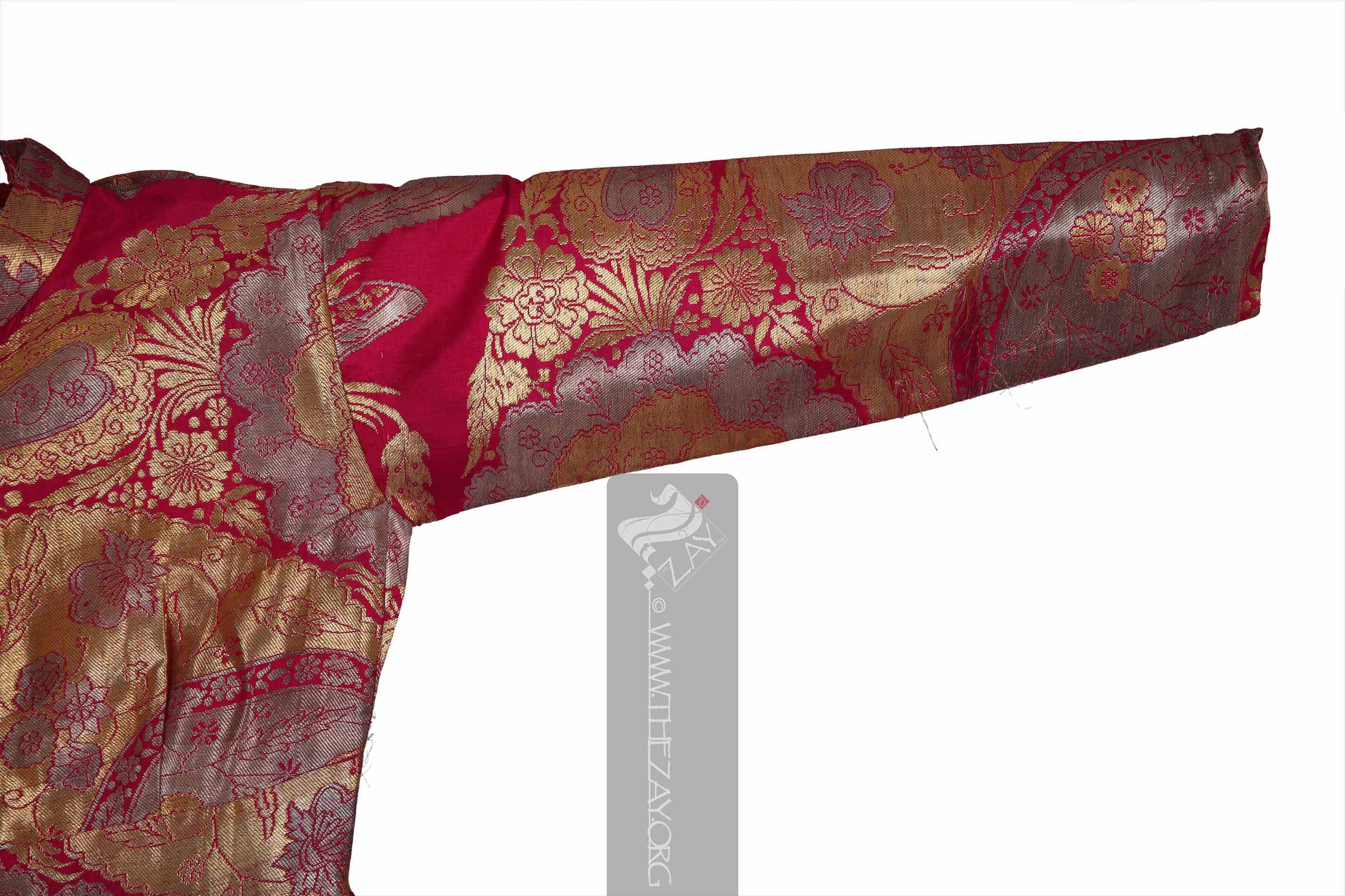
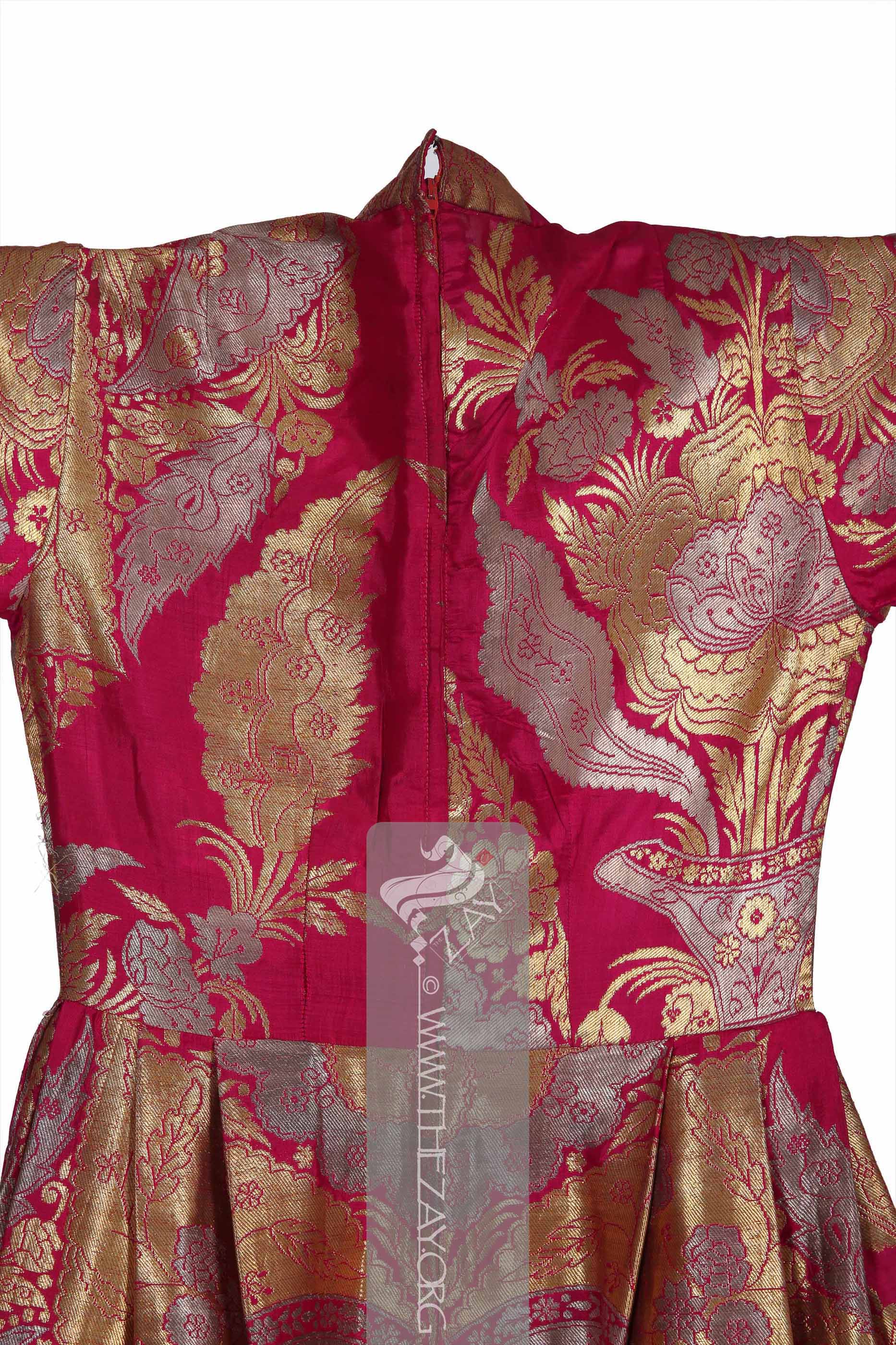
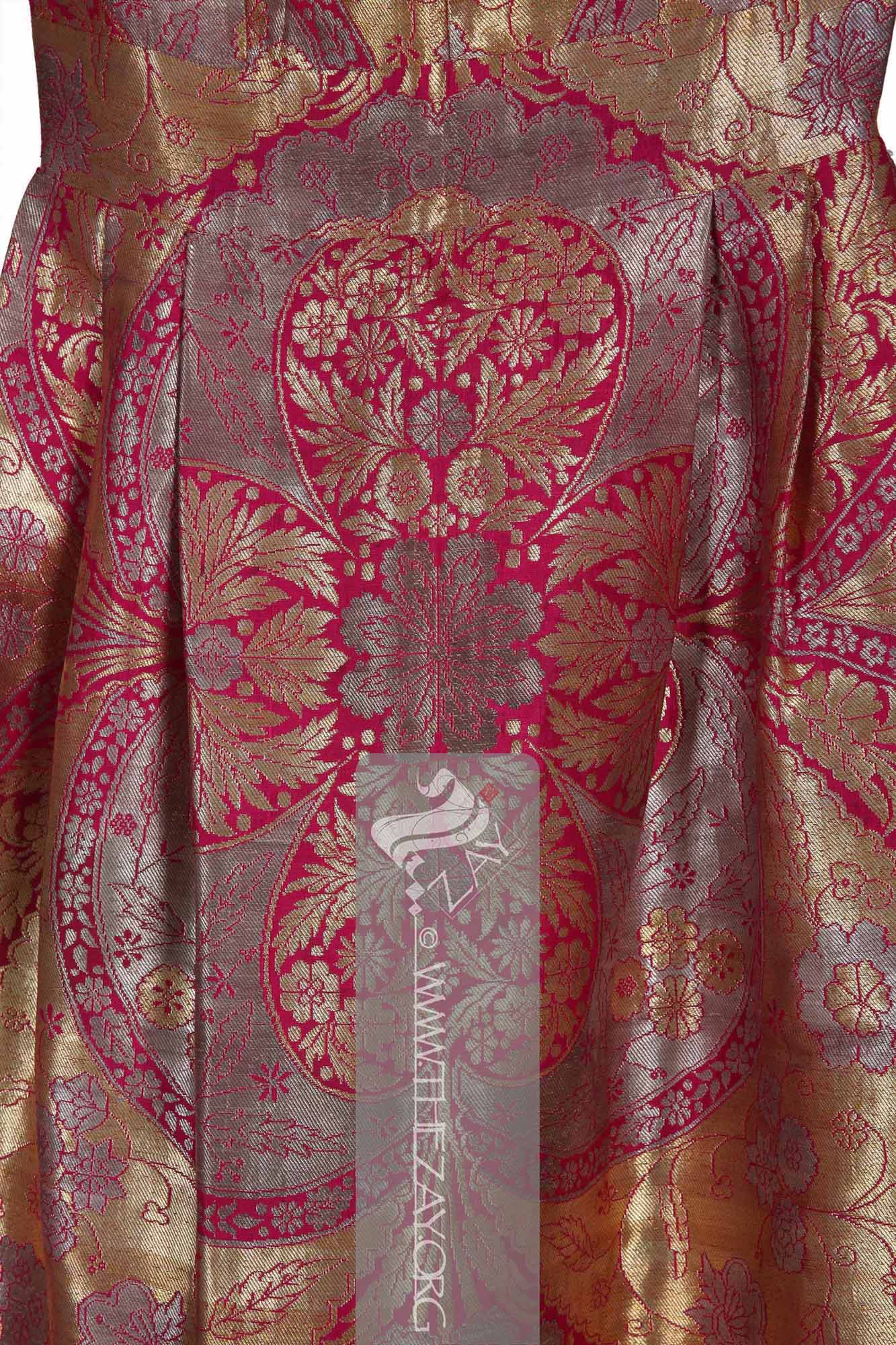
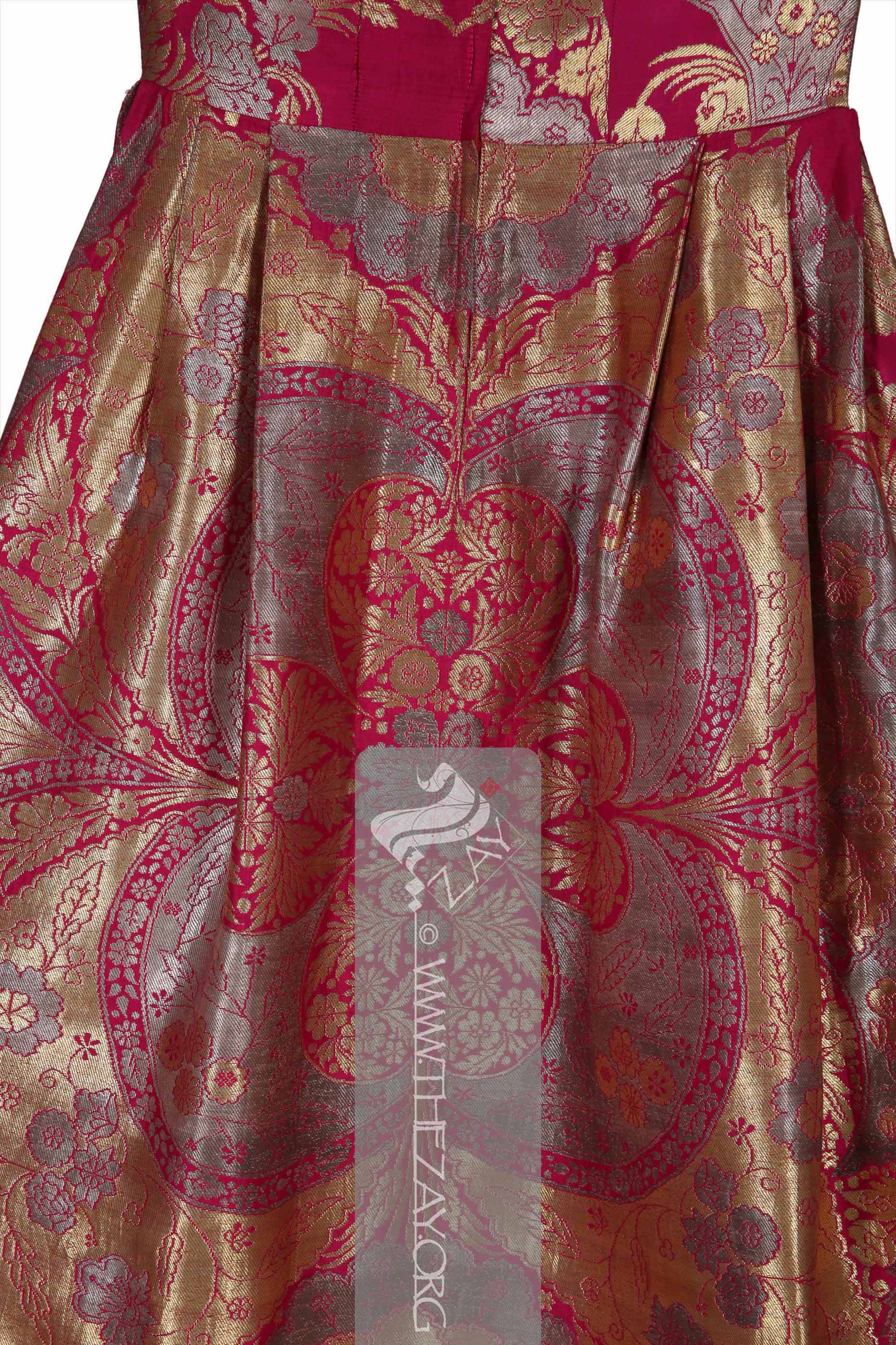
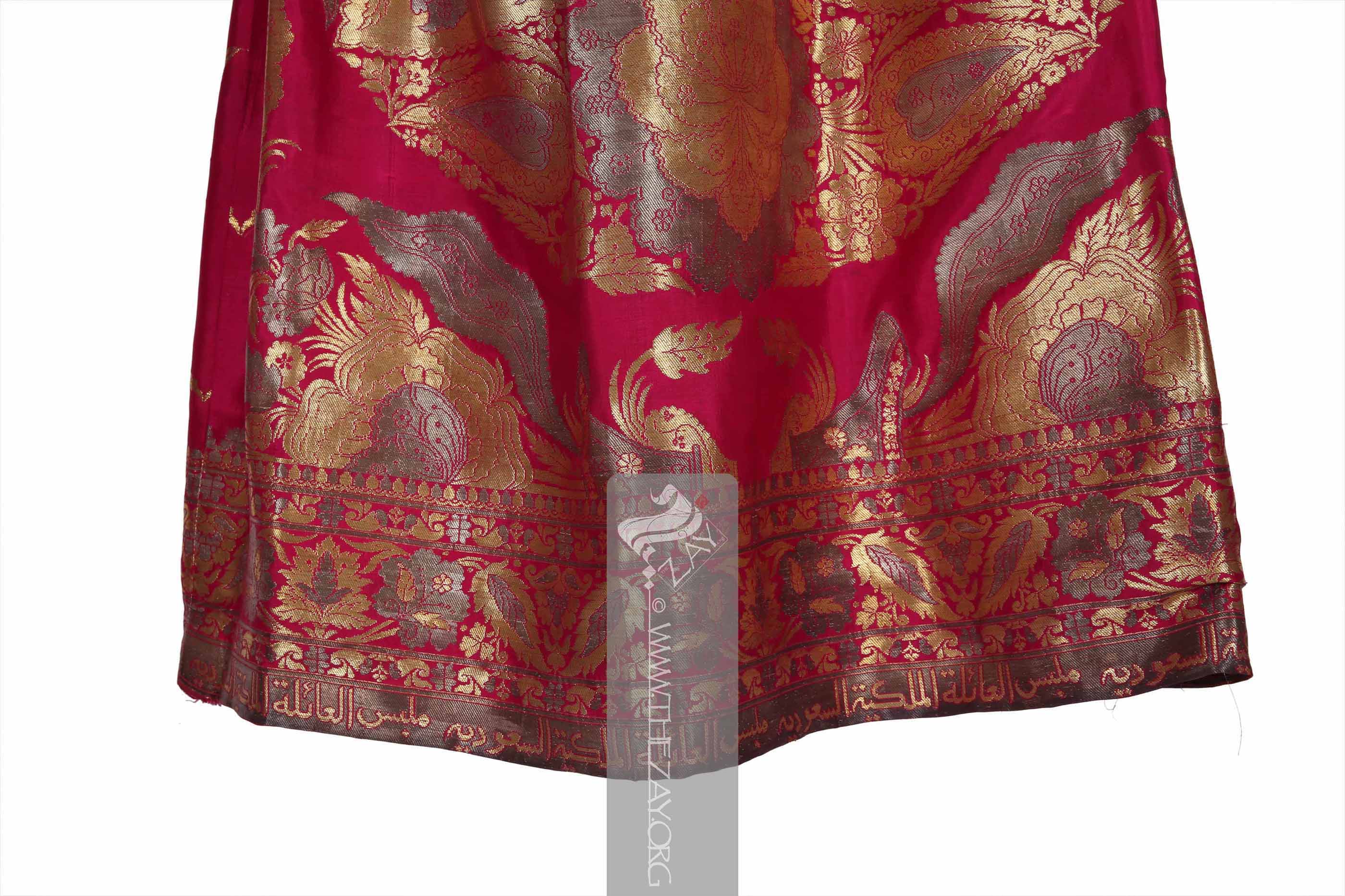
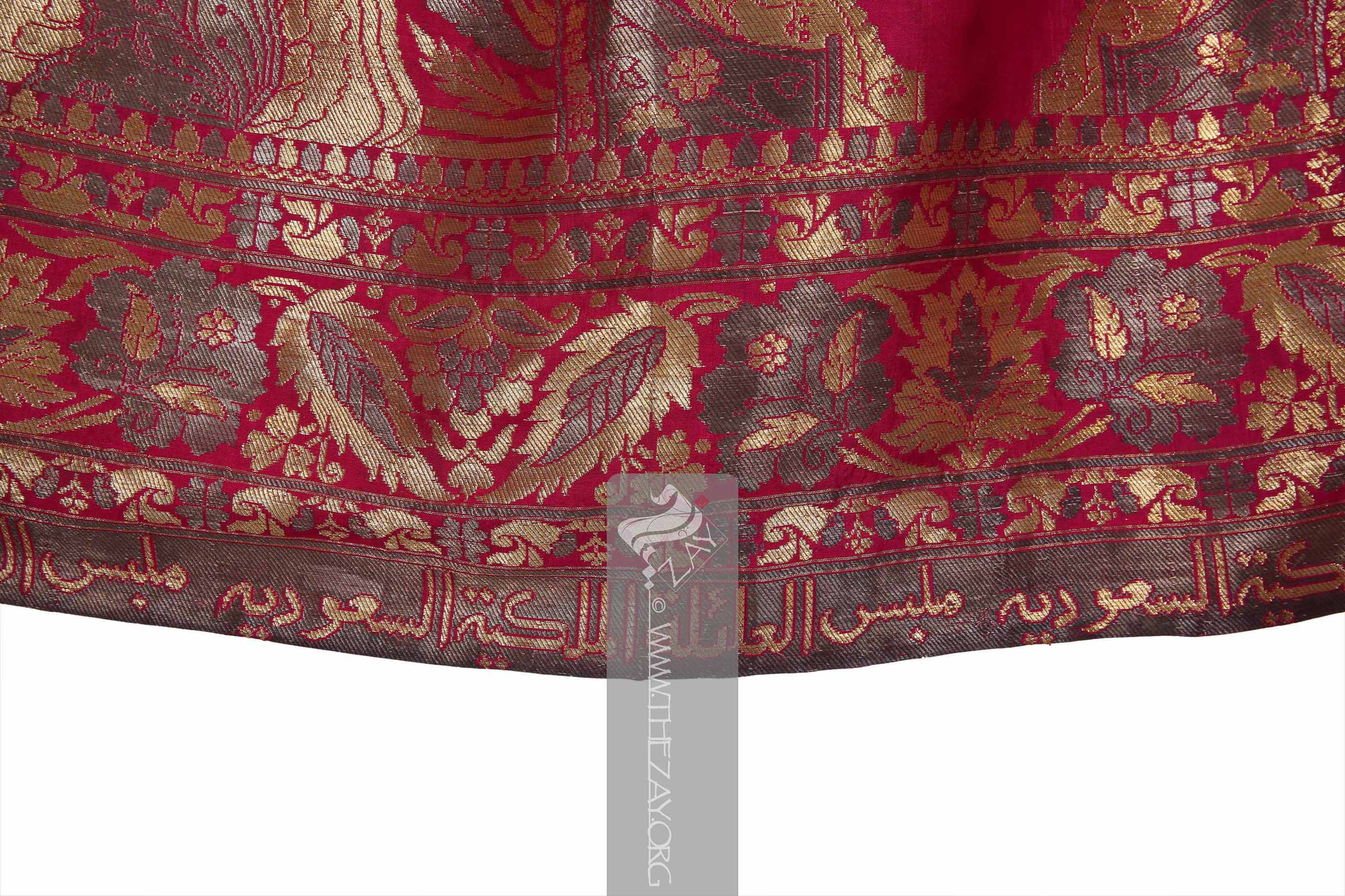
| Local Name | Kurtah |
| Object Category | Dress |
| Gender | Female |
| Date of object | 1988 |
| Place Of orgin | Asia |
| Region | Mecca |
| Object Range | Saudi Arabia |
| Dimensions | Length: 135 cm Width: 103 cm |
| Materials | Silk Metal |
| Technique | Machine Stitched Woven |
| Color | |
| Motif | Arabesque Floral |
| Provenance | Gifted, Basma al Chalabi, Iraq 2021 |
| Location | The Zay Zay: (Arabic: costume, Pl. azyaā’), a set of clothes in a style typical of a particular country or historical period. Initiative |
| Status | In storage |
| ZI number | ZI2021.500884 KSA |
Salwar: (Farsi: shalvār; Synonym: ṣarwāl, shirwāl ), trousers featuring tapering ankles and drawstring closure of Central Asian origin. They disseminated in the Indian subcontinent between c.1st-3rd century BCE. Although exact period of its arrival in the Arab world is disputed their widespread adoption is confirmed from the 12th century.
, churidars, or pyjama. In Hijazi dialect, the term refers to a sleeved, waist-cinched dress that comes in different styles, popularly worn since the 1950s.) also known as (fustan Fustān: (Albanian: dress, pl. fasatīn, synonyms: bīchī, gawan Gawan: (English: gown, or Arabic: qawan, synonyms: bīchī, fustān, nafnūf, kurtah Kurtah: (Urdu and Persian: kurta, synonyms: bīchī, gawan, fustān, nafnūf, kirtah Kirtah: (Punjabi: kurta, synonyms: bīchī, gawan, fustān, nafnūf), colloquially in KSA, Kuwait and Bahrain refers to sleeved, waist-cinched dress that comes in different styles.), a loose sleeveless shirt of varying lengths, typically falling either just above or somewhere below the knees, with its side-seams left open at the bottom, worn in South Asia, usually with a salwarSalwar: (Farsi: shalvār; Synonym: ṣarwāl, shirwāl ), trousers featuring tapering ankles and drawstring closure of Central Asian origin. They disseminated in the Indian subcontinent between c.1st-3rd century BCE. Although exact period of its arrival in the Arab world is disputed their widespread adoption is confirmed from the 12th century.
, churidars, or pyjama. In Hijazi dialect, the term refers to a sleeved, waist-cinched dress that comes in different styles, popularly worn since the 1950s., kirtah Kirtah: (Punjabi: kurta, synonyms: bīchī, gawan, fustān, nafnūf), colloquially in KSA, Kuwait and Bahrain refers to sleeved, waist-cinched dress that comes in different styles.), colloquial term used in UAE for a sleeved, waist-cinched full-length dress of varying lengths and styles., nafnūf, kurtah Kurtah: (Urdu and Persian: kurta, synonyms: bīchī, gawan, fustān, nafnūf, kirtah Kirtah: (Punjabi: kurta, synonyms: bīchī, gawan, fustān, nafnūf), colloquially in KSA, Kuwait and Bahrain refers to sleeved, waist-cinched dress that comes in different styles.), a loose sleeveless shirt of varying lengths, typically falling either just above or somewhere below the knees, with its side-seams left open at the bottom, worn in South Asia, usually with a salwarSalwar: (Farsi: shalvār; Synonym: ṣarwāl, shirwāl ), trousers featuring tapering ankles and drawstring closure of Central Asian origin. They disseminated in the Indian subcontinent between c.1st-3rd century BCE. Although exact period of its arrival in the Arab world is disputed their widespread adoption is confirmed from the 12th century.
, churidars, or pyjama. In Hijazi dialect, the term refers to a sleeved, waist-cinched dress that comes in different styles, popularly worn since the 1950s., kirtah Kirtah: (Punjabi: kurta, synonyms: bīchī, gawan, fustān, nafnūf), colloquially in KSA, Kuwait and Bahrain refers to sleeved, waist-cinched dress that comes in different styles.), Arabized via Turkish, derived from the Latin word ‘fustaneium’ meaning ‘thick, rough cotton cloth’. The term in the Arab world generally refers to sleeved, waist-cinched garments of varying lengths and styles.), was originally acquired by the late Sahirah Nuri El Mutwalli, Dr. Reem TariqṬariq: (Arabic; Synonym: tulle_bi_talli; talli; badla; khus_dozi ), series of small metal knots made on a woven net ground as embellishment. The term is commonly used in the Levant Arab region specifically in Lebanon.
El Mutwalli Dr. Reem TariqṬariq: (Arabic; Synonym: tulle_bi_talli; talli; badla; khus_dozi ), series of small metal knots made on a woven net ground as embellishment. The term is commonly used in the Levant Arab region specifically in Lebanon.
el Mutwallī: Founder (CEO) of the Zay Zay: (Arabic: costume, Pl. azyaā’), a set of clothes in a style typical of a particular country or historical period. Initiative, a public figure, speaker and author. An expert curator and consultant in Islamic art and architecture, interior design, historic costume, and UAE heritage.’s paternal aunt, while visiting Mecca, Saudi Arabia during pilgrimage (Al_Haj Al_ḥaj: (Arabic: pilgrimage), an annual Islamic pilgrimage to Mecca, Saudi Arabia, the holiest city for Muslims. A mandatory religious duty for Muslims that must be carried out at least once in their lifetime.). It was gifted to the Zay Zay: (Arabic: costume, Pl. azyaā’), a set of clothes in a style typical of a particular country or historical period. Initiative in 2021 by her daughter, Basma al Chalabi, in memory of her late mother.Salwar: (Farsi: shalvār; Synonym: ṣarwāl, shirwāl ), trousers featuring tapering ankles and drawstring closure of Central Asian origin. They disseminated in the Indian subcontinent between c.1st-3rd century BCE. Although exact period of its arrival in the Arab world is disputed their widespread adoption is confirmed from the 12th century.
, churidars, or pyjama. In Hijazi dialect, the term refers to a sleeved, waist-cinched dress that comes in different styles, popularly worn since the 1950s.) of pink Indian silk is bocaded in silver and gold thread (zari Zarī: (Persian two-syllables: zar: gold & dozi: embellishment), complex embroidery technique that uses metal alloy on silk, satin, or velvet, and may include pearls, beads, and precious stones. Colloquially in the Arab gulf region, the term (zarī) is loosely applied to any gilded thread, embellishment or gilded brocade fabric. Originated in ancient Persia it has been used extensively in Indian and Middle Eastern textiles for centuries. ) or (kantil Kantīl: (colloquial Hijazi), a term referring to embroidery with gold or silver thread, also known as (zari). The term is equally used in Morocco and Algeria.) in an imposing central large medallion motif.Salwar: (Farsi: shalvār; Synonym: ṣarwāl, shirwāl ), trousers featuring tapering ankles and drawstring closure of Central Asian origin. They disseminated in the Indian subcontinent between c.1st-3rd century BCE. Although exact period of its arrival in the Arab world is disputed their widespread adoption is confirmed from the 12th century.
, churidars, or pyjama. In Hijazi dialect, the term refers to a sleeved, waist-cinched dress that comes in different styles, popularly worn since the 1950s. is a transitional dress that became popular after King Abdelaziz Al-Saud established the modern Kingdom of Saudi Arabia in 1932. The shape is reflective of the phase where dresses started taking shape that contoured and hugged the body, and zippers were introduced. It sports a Mandarian collar and a ¾ length sleeves and a mid-calf length skirt.Salwar: (Farsi: shalvār; Synonym: ṣarwāl, shirwāl ), trousers featuring tapering ankles and drawstring closure of Central Asian origin. They disseminated in the Indian subcontinent between c.1st-3rd century BCE. Although exact period of its arrival in the Arab world is disputed their widespread adoption is confirmed from the 12th century.
, churidars, or pyjama. In Hijazi dialect, the term refers to a sleeved, waist-cinched dress that comes in different styles, popularly worn since the 1950s.) could be worn alone, with or without an overgarment (thawb Thawb: (Arabic: thawb, Pl. Athwāb/thībān), can be pronounced thobe Thobe: (Arabic: thawb, Pl. Athwāb/thībān), can be pronounced thawb or tobe Tobe: (Arabic: thawb, Pl. Athwāb/thībān), can be pronounced thawb or thobe based on locale. The standard Arabic word for ‘fabric’ or ‘garment’. It can refer to a qamīs-like tunic worn by men and women in the Arabian Peninsula, Iraq, the southern and south-western ports and islands of Iran, and some countries in East and West Africa. More specifically, it can refer to the square-shaped Bedouin overgarment worn by women. based on locale. The standard Arabic word for ‘fabric’ or ‘garment’. It can also refer to a qamīs-like tunic worn by men and women in the Arabian Peninsula, Iraq, the southern and south-western ports and islands of Iran, and some countries in East and West Africa. More specifically, it can refer to the square-shaped Bedouin overgarment worn by women. or tobe Tobe: (Arabic: thawb, Pl. Athwāb/thībān), can be pronounced thawb or thobe based on locale. The standard Arabic word for ‘fabric’ or ‘garment’. It can refer to a qamīs-like tunic worn by men and women in the Arabian Peninsula, Iraq, the southern and south-western ports and islands of Iran, and some countries in East and West Africa. More specifically, it can refer to the square-shaped Bedouin overgarment worn by women. based on locale. The standard Arabic word for ‘fabric’ or ‘garment’. It can also refer to a qamīs-like tunic worn by men and women in the Arabian Peninsula, Iraq, the southern and south-western ports and islands of Iran, and some countries in East and West Africa. More specifically, it can refer to the square-shaped Bedouin overgarment worn by women in the Arabian Gulf region. ). Some versions sport the two swords and palm motifs, embelems of the Kingdom of Saudi Arabia, commonly known by (Sufrat_S’ud Sufrat_S’ūd: (Arabic: sufrah Sufrah: (colloquial: UAE, synonyms: kūfīyah, shmāgh, haṭṭah, mshadah, qaḍāḍah, jamadānah), a large square piece of white woven cotton, folded in half to form a triangle. The folded edge is worn across the forehead fastened by a cord (‘iqal) and draped off the shoulders. Worn in the Levant, Iraq, and the Arabian Gulf.: table or mat, S’ūd: male name), meaning s’ud’s mat, in reference to woven or embroidered medallions in a metallic thread (zari) or (kantil Kantīl: (colloquial Hijazi), a term referring to embroidery with gold or silver thread, also known as (zari). The term is equally used in Morocco and Algeria.), resembling palm frond mats for serving food. Originally decorated in floral and plant motif, post establishment of Saudi Arabia, two intersecting swords and a central palm tree became prevalent. Woven in India by special request of King Saud bin Abdulaziz Al Saud, to gift his wife, Princess Jamila bint Asa’ad bin Ibrahim Mareyi, eventually becoming an official royal gift.).